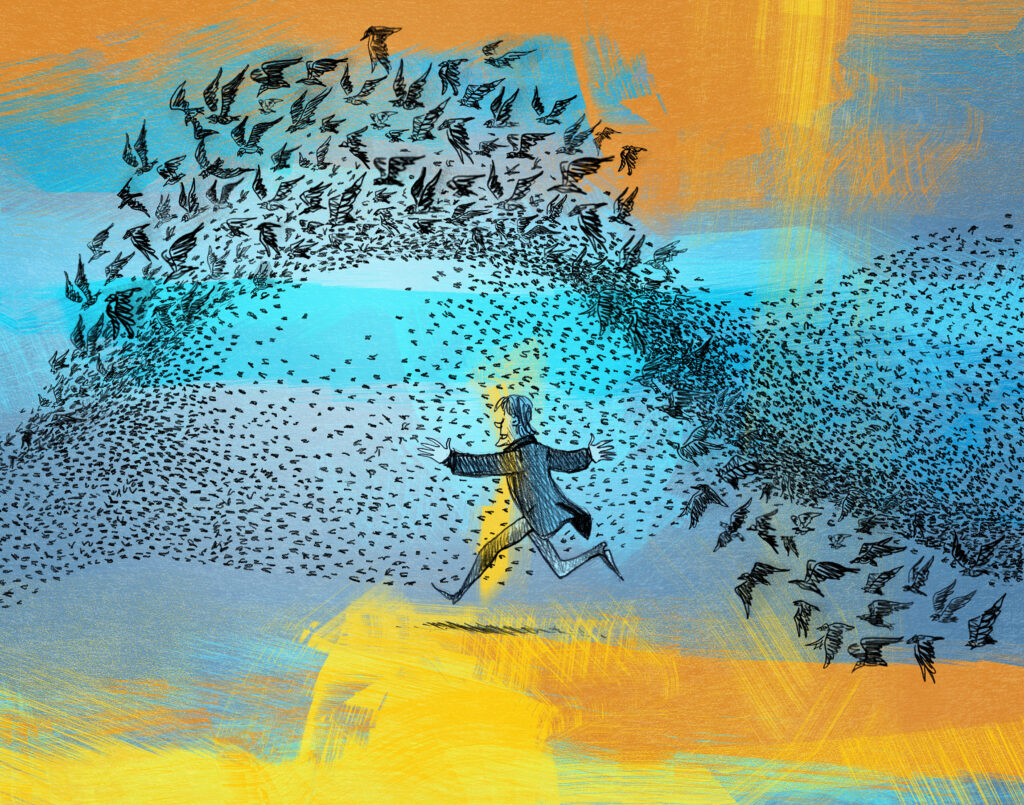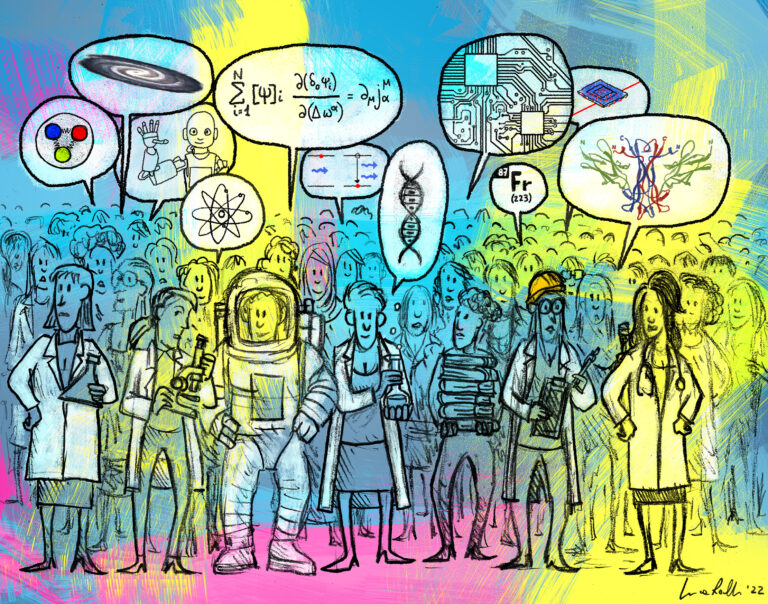With shapes as changeable as clouds, at times dense and compact, at times more sparse, starlings paint the winter skies of our cities, moving as a single, coherent, collective entity.
They are not led by a conductor, but each starling looks at its closest companions and decides what to do. So the information spreads quickly like a domino from the individual to the whole group that flies with order and coordination. No one ever strays too far or bumps into their companions.
The flight of birds, spin glasses, (window) panes, proteins, the structure of the brain, insects, financial systems, the earth, however different they may be in scope and scale, have much in common. They are complex systems, they follow rules that have to be discovered in the interactions between the multitude of players that produce them.
So, finding the right approach to understanding the rule that links individual interactions to collective behaviour and then learning to apply it is the key to describing the complexity of nature and society.



